
ESSENTIAL SKILLS FOR
NATURE
PHOTOGRAPHY
Cub Kahn
A MHERST M EDIA , I NC .

B UFFALO , N EW Y ORK
Copyright 1999 by Cub Kahn
All rights reserved
Published by:
Amherst Media, Inc.
P.O. Box 586
Amherst, NY 14226
Fax: (716) 874-4508
Publisher: Craig Alesse
Project Manager: Michelle Perkins
Senior Editor: Frances J. Hagen
Assistant Editor: Matthew A. Kreib
Photos by: Cub Kahn
ISBN: 1-58428-009-3
Library of Congress Card Catalog Number: 99-072171
No part of this publication may be reproduced, stored, or transmitted in any form or by any means, electronic, mechanical, photocopied, recorded, or otherwise, without prior written consent from the publisher.
Notice of disclaimer: The information and suggestions provided in this book are based on the experiences and opinions of the author. The author and publisher will not be responsible or liable for the use or misuse of the information in this book.
Printed in the United States of America
10 9 8 7 6 5 4 3 2 1
This book is dedicated to my teachers, who have helped me
understand what is known, and to my students, who have
helped me understand what is possible.
Thank you kindly.
About the Author:
Cub Kahn is a professional nature photographer and environmental educator. Cubs medium-format and 35mm photography focuses on the landscapes and ecology of mountains, rivers and coastal landscapes.
Cubs photos have been published in magazines such as Audubon, Backpacker, National Wildlife, Sierra, and Travel and Leisure, as well as The New York Times and The Los Angeles Times. His photos were featured in the book, Virginia on My Mind, and the booklet, Virginias Waters. Cub has also written about nature photography for Photographic magazine. He has taught nature photo workshops and short courses since 1986 for a variety of environmental organizations and educational institutions.
Cub has degrees in environmental and marine sciences and a doctorate in education. In addition to his photographic pursuits, he teaches environmental sciences at Marylhurst University. Cub lives in Forest Grove, Oregon.
Gratefull acknowledgment is made to David Cavagnaro for permission to reprint excerpts of his writing from Feathers, 1982, Graphic Arts Center Publishing Company.
Table of Contents
The camera has kept clear an opening between my inner self and
the natural world. Through this little window I can still
sometimes see with the clarity of a childs eye and achieve a
sense of oneness with the life and elements around me.
David Cavagnaro
Nature photography is a fun, rewarding, creative activity. More than that, nature photography is a powerful way of connecting with, and learning about, your environment. As a result of vast improvements in cameras, lenses and film, taking good nature photos is easier than ever.
Nature photography is a fun, rewarding, creative activity.
This book is a guide for beginners who want to take great nature photos with color film and an automatic 35 mm SLR or a point & shoot camera. Additional information is given for readers with manual SLRs who want to improve nature photo skills. This book covers the fundamentals of nature photo composition, exposure and focusing; specific techniques for photographing wildlife, landscapes and close-ups; basic information about nature photo equipment and suggestions for what you can do with your favorite nature photos.
To aid your learning, terms appearing in boldface type are defined in the glossary at the end of the book, and exposure and lens information is given for many of the illustrations.
To make great pictures, you dont need a lot of equipment and you dont need to memorize a bunch of strange equations and technical details. All you need are a basic camera, some simple guidelines, your own intuition and a whole lot of patience.
Most of all, good nature photography is a matter of spending time outdoors, observing nature closely, and learning how to best use the capabilities of your camera, lenses and film to make memorable images. You can do it!
Try to compose nature photos that speak clearly to the viewer. This tranquil image of an Atlantic sunrise on the Virginia coast is visually powerful in its simplicity. (70-210mm zoom lens)
Photography, like sketching or painting, is a form of two-dimensional art. However, a painter begins with a blank canvas and fills it in, whereas a nature photographer begins by viewing the immense natural world and then selects a relatively tiny portion to record on film. Each time you take a nature photo, you are pointing your camera at some selected part of the earth or sky and thus you are composing an image.
What is meant by composition? Composition refers to the arrangement of visual elements shape, form, color, tone, pattern, texture, balance and perspective that makes up an image. Sounds complicated, doesnt it? Well, not really.
Taking a good photo is a lot like telling a good story. A simple, effective approach to composing nature photos is to look through the viewfinder and ask yourself two questions:
1. What is your message?
2. What is the best way to get that message across?
Why are some photographs of the natural world so compelling? Because the message is clear, the photographer did an effective job of communicating that message, and the message is not weakened or obscured by distracting elements in the composition.
Many professional nature photographers take a rather Zen-like approach to composition. Rather than trying to stuff a bunch of subjects into a single image maybe a soaring bald eagle, a grizzly bear with a salmon in its mouth and a beautiful sunset pros learn from experience that simplicity is often the best approach when it comes to composition. Yes, the quality of your photos depends on what you put in the image, but keep in mind that what goes in the image directly depends on what you choose to leave out. Many poor photos are mediocre because the photographers message is diluted by distracting details.
1-1: This photo of a soaring turkey vulture was taken in the Appalachian Mountains. It epitomizes simplicity in composition with a solid figure moving across a softly textured background. In photos of moving wildlife, frame the photo so that you give the animals plenty of room to move across the image. (70-210mm zoom lens)
As you compose your photos, keep in mind the words of Henry David Thoreau, the 19th-century philosopher and champion of the natural world: Simplicity, simplicity, simplicity! A good approach is to keep looking through the viewfinder and fine tuning your composition until you have removed all unnecessary clutter from the image. Imagine that you are cleaning up your images, removing all the unwanted visual elements that can distract the viewer from your message (see ).
Next page
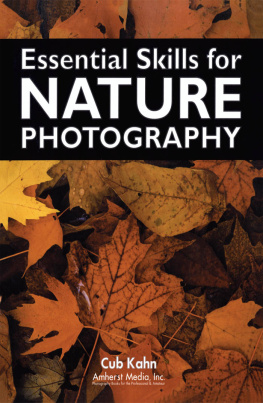
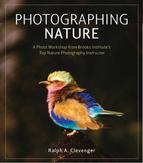
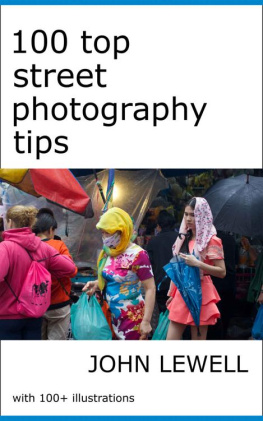

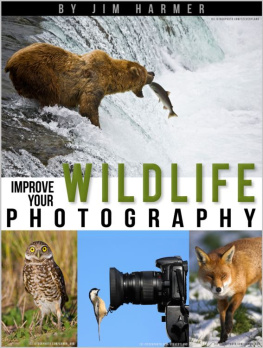

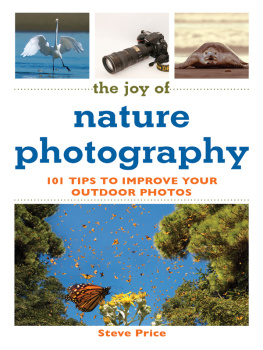
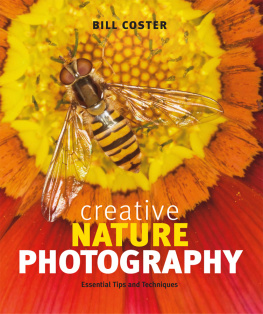


 B UFFALO , N EW Y ORK
B UFFALO , N EW Y ORK
